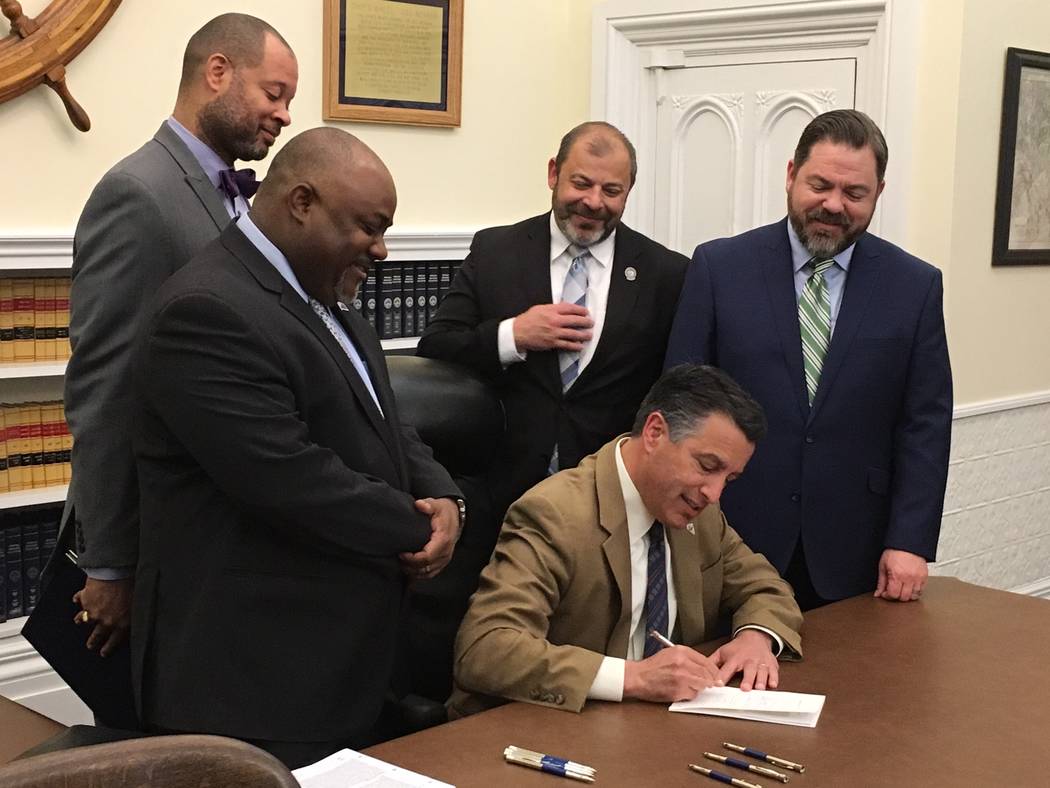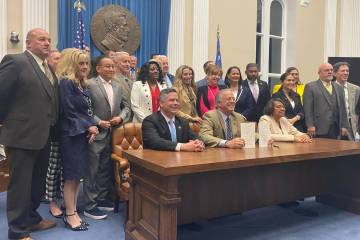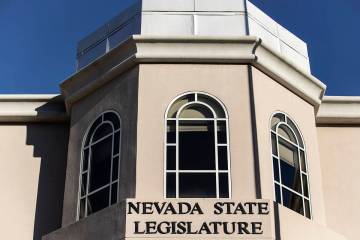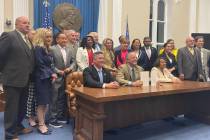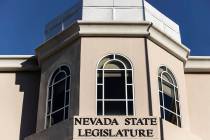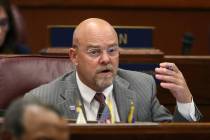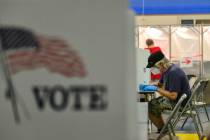Clark County School District reorganization turned into bipartisan solution in Nevada Legislature
With the stroke of a pen Monday, Gov. Brian Sandoval ended the debate about whether the Clark County School District would be reorganized, and moved on to how.
The signing ceremony in the governor’s office for Assembly Bill 469 followed a long, two-year process marked by high drama, lawsuits and plenty of meetings about how best to run a local school.
At this point, we can’t know if the reorganization will produce better results for students. But we know for sure the old system was failing too many students far too often. At least now the people who have the greatest interest in the education and success of kids — their parents and teachers — will have much more say in how schools are run.
I wasn’t always so sanguine about the process, when Republican Assemblyman David Gardner first introduced the idea in the 2015 Legislature as Assembly Bill 394. The original plan was to create several school “precincts” in Clark County, each operating more or less independently.
The bill sat in the Assembly for nearly the entire session as Gardner — a freshman lawmaker who didn’t win re-election in 2016 — assiduously cultivated support. It was rammed through the state Senate in the final minutes of the 2015 session, over the heated objections of Democrats.
But during the next two years, the bill underwent significant changes. A consultant recommended turning each Clark County school into an empowerment campus, with parents and school-site leaders making decisions based on the needs of the students. The overall Clark County School District would provide administrative services, under contract with local schools.
That arrangement didn’t sit well with some school trustees. They agreed (improperly, as it turns out) in a closed session to sue the state over some of the terms of the reorganization. (The district was to bear the costs, including the price of an outside consultant; the implementation time line was accelerated by one year; and regulations for the reorganization drew objections.)
The lawsuit was eventually re-filed (after an open-meeting vote), but the regulations found favor in the Legislature, which mooted the litigation by cementing the rules into law.
But a funny thing had happened along the way. The bill, which had some Republican support in 2015, gained a lot more as the final reorganization was reduced to writing. AB 469 was that rarest of things — a bill on a controversial policy subject that had the support of the majority and minority leaders in both houses of the Legislature. This guaranteed its passage, but more than that, it lent a bipartisan level of support to the idea that something needed to change in the district, and that the process of implementing AB 394 had produced something everybody could agree on. (The final vote to approve AB 469 was unanimous in the state Senate and drew only two “no” votes in the Assembly — Assemblywoman Maggie Carlton and Assemblyman Richard Carrillo, both D-Las Vegas.)
That’s right: Senate Majority Leader Aaron Ford — who was incensed at the way the 2015 legislation was approved and objected in the loudest possible terms — ended up co-sponsoring the bill that implemented the reorganization. Three Assembly Democrats and six of their Senate colleagues who hit the red button in 2015 pressed the green one this time around.
“It allows for a more bottom-up process for the schools,” the governor said. “Because no two schools are the same.”
It’s entirely possible the critics are right, and that student achievement won’t increase as a result of the reorganization. A lot depends on the proper implementation of a weighted funding formula sought by the Clark County Education Association. (It would provide more money for English-language learners, students in poorer areas, special-education and gifted students.) That will be critical to the reorganization’s success.
It’s always foolish to compare motion with progress. But the process of the reorganization was unique in Nevada. What started as a partisan fight turned into a bipartisan solution. These days, that’s a good thing in and of itself.
Contact Steve Sebelius at SSebelius@reviewjournal.com or 702-387-5276. Follow @SteveSebelius on Twitter.



